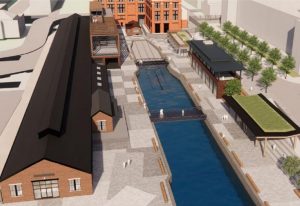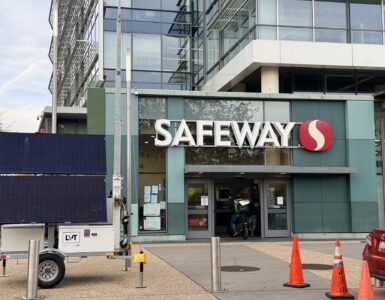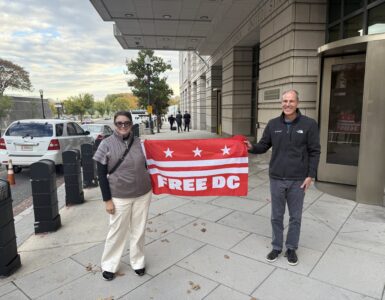The U.S. Navy and developer Redbrick LMD plan to swap two parcels of land in the Navy Yard neighborhood that will allow the Navy to build a new home for its museum and Redbrick to construct a retail plaza.
After gaining approval from the National Capital Planning Commission in early November, Redbrick and the Navy Yard are now working out the details in private.
The Navy’s current museum is located within Navy Yard walls and requires visitors to pass through significant security measures to visit. The new location will be on Fourth and Tingey streets, SE.
Lieutenant Ian McConnaughey, a spokesperson for Naval History and Heritage Command, said the Navy Museum Development Foundation, a non-profit partner of the Navy, is raising funds to develop and construct the new museum building.
“The Navy intends to hold a groundbreaking event on the Navy’s birthday in 2025,” McConnaughey said. “The opening of the museum depends on funding, regulatory approvals, and other factors inherent to the construction process.”
According to McConnaughey, the land swap came about because the Washington Navy Yard wanted to oversee the development of the parcel of land now leased to Redbrick. Brookfield Properties, another real estate company that initially had development rights for the parcel, had plans to construct a high-rise residential building there.
The Navy took issue with the placement of that building, however. It said the building would stand too close to the yard, therefore posing “a significant security risk” in that it made the Navy Yard susceptible to eavesdropping.
“Acquiring the land will allow the Navy to control potential future reuse of the land, thus mitigating security concerns,” McConnaughey said.
The Navy Yard offered a parcel of land from its campus. The Navy will retain ownership of the land but will lease it to Redbrick, which now controls the parcel, for development.

Source: NCPC Media Release
The Navy intends to use the swap and construction of a new museum building to improve upon the current museum’s design.
“Currently, we are holding working groups around the country with active-duty sailors in an effort to come up with new ideas and elements, in order to get their take on how they would like to see their service represented in the new museum,” McConnaughey said. “Their responses, along with input from other stakeholders, will help the National Museum of the U.S. Navy’s curatorial team develop the museum’s interpretive plan.”
McConnaughey said the new building’s plan will also involve technological developments to better display the exhibits and make the museum more accessible overall. The current museum stands within the Navy Yard’s walls and requires all visitors to pass through significant security measures to just get into the parking lot.
“That plan will ensure the new facility is a purpose-built museum that will allow the Navy to tell its story using state-of-the-art technology combined with the Navy’s vast collection of artifacts, artwork, and manuscripts,” McConnaughey said. “We’re excited by exploring the possibility of using technology to personalize experiences for our visitors and to allow veterans to see images and artifacts connected to their own service.”
The most recent proposal on the matter made to the National Capital Planning Commission said that the land going to Redbrick will be developed into residential, retail, hospitality, and office spaces, although the exact plans at this stage are not clear.
Redbrick LMD did not return The Wash’s requests for comment.
A boost in business
Ted Juthras, vice president of planning and public realm for the Capitol Riverfront Business Improvement District, said he expected the developments to affect the surrounding areas for the better.
“The museum will likely draw over a million additional visitors to the neighborhood each year, which will help bolster our retail market and market the neighborhood to prospective residents and commercial tenants,” Juthras said.
Chloe Donnelly, a resident of neighboring Southwest Waterfront, said she liked the idea of the Redbrick development plans, but she felt that there were other issues that she was more concerned about at the moment, given the increase in crime in the neighborhood.
“I think whoever is doing the developing needs to work with the city to make it safer, and in my opinion that starts with grassroots efforts to improve quality of life for low-income families,” Donnelly said. “It’s not an immediate solution and would take time, but I think if more funding is going to go toward making things safer, then funding should also go toward addressing the cause of crime.”















Add comment